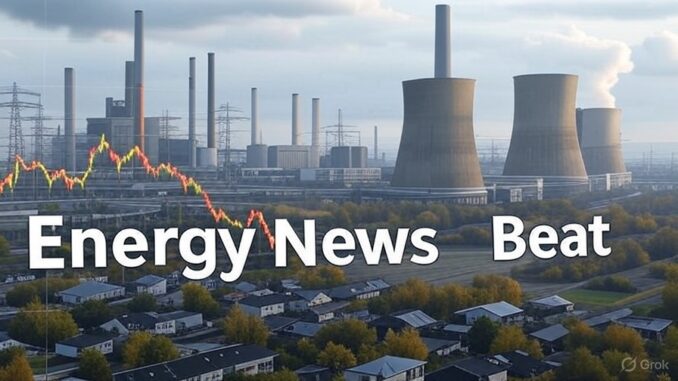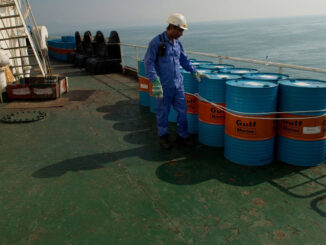
Germany has long been hailed as Europe’s industrial powerhouse, renowned for its engineering prowess and export-driven economy. However, in recent years, the country’s ambitious push toward net zero emissions—embodied in its Energiewende policy and amplified by EU-wide regulations—has sparked debate. Critics argue that soaring energy costs, regulatory burdens, and a rapid shift away from reliable fossil fuels have eroded Germany’s competitive edge in manufacturing. Proponents counter that the transition fosters innovation and long-term sustainability. With manufacturing accounting for about 20% of Germany’s GDP, any decline could have profound implications. This article examines Germany’s energy mix, net zero policies, EU regulations, job losses in key industries over the past decade, and GDP trends over the last five years to assess whether net zero ambitions have indeed cost Germany its global standing in manufacturing.
Germany’s Evolving Energy Mix
Have you calculated your Tax Burden in 2025?
Germany’s energy landscape has undergone a dramatic transformation, prioritizing renewables while phasing out nuclear and coal power. In 2024, renewable sources accounted for a record 62.7% of net public electricity generation, up from previous years, marking the cleanest mix in the country’s history.
Wind power led at 28%, followed by coal at 23% and solar at 16%.
Overall electricity generation fell 4.2% year-over-year to 431.7 terawatt-hours (TWh), with consumption rising slightly by 0.9%.
However, this shift focuses primarily on electricity, which represents only part of total energy consumption. In 2023, fossil fuels still dominated overall energy use at 77.6%, with renewables at 19.6% and a negligible 0.7% from other sources.
The phase-out of nuclear power, completed in 2023, and the planned coal exit by 2038 have increased reliance on imports and variable renewables, leading to higher energy prices for industry.
This has particularly strained energy-intensive sectors like chemicals and steel, where stable, affordable power is crucial.
Net Zero Energy Policies: The Energiewende in Focus
At the heart of Germany’s transition is the Energiewende, a policy framework launched over a decade ago to shift from fossil fuels and nuclear to renewables, aiming for a virtually climate-neutral economy by mid-century.
Key targets include net greenhouse gas neutrality by 2045, with interim goals of a 65% emissions reduction by 2030 compared to 1990 levels.
The policy emphasizes expanding renewables, improving energy efficiency, and integrating sectors like mobility and heating into a decarbonized system.
While the Energiewende has boosted renewables and reduced emissions—Germany’s power grid is now geared toward net zero by 2045 with a focus on renewables expansion—it has also driven up costs.
Industrial electricity prices have risen due to subsidies for green energy and grid upgrades, prompting concerns about deindustrialization.
Supporters highlight benefits like job creation in clean tech, but critics point to inefficiencies, such as reliance on intermittent sources without adequate storage, exacerbating supply volatility during the 2022 energy crisis.
EU Regulations: The Green Deal’s Ripple Effects
Germany’s policies align with broader EU mandates under the European Green Deal, adopted in 2020, which aims for at least 55% emissions cuts by 2030 and climate neutrality by 2050.
This encompasses over 175 directives and regulations, including the European Climate Law, carbon border adjustment mechanisms, and sustainability reporting rules.
The Green Deal Industrial Plan seeks to bolster net-zero industries but imposes stringent requirements on energy-intensive sectors.
For German manufacturing, these regulations mean higher compliance costs, such as emissions trading and supply chain due diligence, affecting agriculture, industry, energy, and transport.
Germany’s government has occasionally pushed back, delaying EU sustainability reporting to ease burdens on businesses.
While the Deal promotes clean tech investment—Germany invested $89.12 billion in 2023—critics argue it hampers competitiveness, especially amid global trade tensions.
Job Losses in Manufacturing: A Decade of Strain
Over the past 10 years (2015–2025), Germany’s manufacturing sector has experienced moderate overall employment stability until a sharp downturn post-2021, driven by energy costs, weak demand, and automotive shifts.
Industry employment was largely flat from 2020 onward after a minor dip in 2019–2020, but recent years have seen significant losses.
By mid-2025, the sector shed nearly 250,000 jobs amid a worsening downturn, with 101,000 lost in a single year.
Key industries hit hardest include:
|
Industry
|
Estimated Job Losses (2015–2025)
|
Key Factors
|
|---|---|---|
|
Automotive
|
~100,000–150,000 (including 51,500 in Q2 2025 alone)
|
EV transition, falling production (down 28% since 2016), energy costs
|
|
Metal Manufacturing
|
~50,000–70,000
|
Declining demand, high energy prices
hashtag.al
|
|
Chemicals & Steel
|
~30,000–50,000
|
Energy-intensive processes strained by net zero regulations
ecipe.org
|
|
Overall Manufacturing
|
~300,000–400,000 (net, including offsets in other areas)
|
Cumulative impact of crises, digital transformation
|
These figures reflect a shift rather than outright collapse, with some jobs relocating abroad or to service sectors.
Energy policies have amplified losses in energy-dependent industries, though global factors like COVID and trade wars also play a role.
GDP Trends Over the Last Five Years
Germany’s GDP has shown stagnation and slight contraction in recent years, contrasting with pre-2020 growth. Nominal GDP reached $4.74 trillion in 2025, but real growth has been lackluster.
The compound annual growth rate (CAGR) over the last five years (2020–2025) was about 1.0%, down from 0.8% over the prior decade.
|
Year
|
Nominal GDP (USD Trillion)
|
Annual Real Growth Rate (%)
|
Key Notes
|
|---|---|---|---|
|
2020
|
~3.85
|
-4.6 (COVID impact)
|
Sharp recession
|
|
2021
|
~4.26
|
+2.9
|
Recovery phase
|
|
2022
|
4.16
|
+1.8
|
Energy crisis onset
macrotrends.net
|
|
2023
|
4.53
|
-0.3
|
Manufacturing slowdown
|
|
2024
|
~4.31 (estimated)
|
-0.2
|
Persistent weakness
|
|
2025
|
4.74 (projected)
|
~0.0 to 0.4
|
Slight uptick projected
|
The 2022–2024 dip correlates with energy price spikes and regulatory pressures, though structural issues like demographics contribute.
Has Germany Lost Its Top Spot?
Germany remains the world’s fourth-largest manufacturer by output in 2024, behind China ($4.66 trillion), the US ($2.91 trillion), and Japan, with a global share of around 5–6%.
It hasn’t “lost” its spot outright—India and South Korea trail behind—but its relative dominance in Europe and global exports is waning. Manufacturing output has declined in real terms since 2021, with energy costs from net zero policies cited as a primary culprit.
High power prices have prompted firms like BASF and Volkswagen to cut jobs and invest abroad, signaling deindustrialization risks.
Yet, data shows resilience: record employment overall and clean tech growth offset some losses.
Net zero hasn’t fully cost Germany its position, but it has accelerated vulnerabilities, especially without cheaper energy alternatives. If trends continue, a slide below fourth place—perhaps to India—could occur by 2030.
In conclusion, while Germany’s Net Zero pursuit has delivered environmental gains, it has imposed tangible economic costs on manufacturing through higher energy bills and regulations. Job losses and GDP stagnation underscore these pressures, but the country retains its top-tier status—for now. Policymakers must balance green ambitions with industrial competitiveness to avoid further erosion.
Have you calculated your Tax Burden in 2025?
Crude Oil, LNG, Jet Fuel price quote
ENB Top News
ENB
Energy Dashboard
ENB Podcast
ENB Substack






Be the first to comment